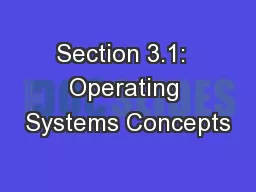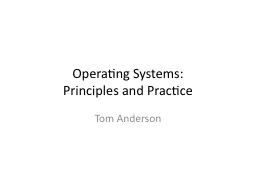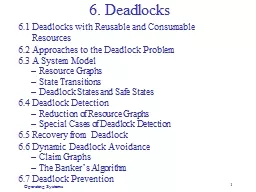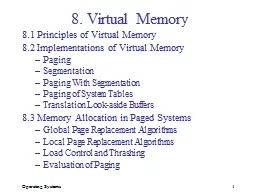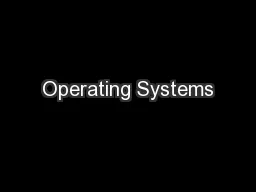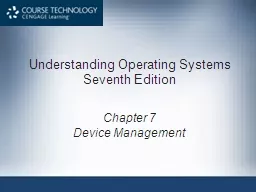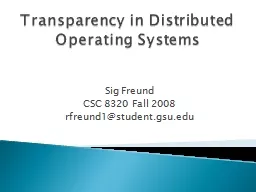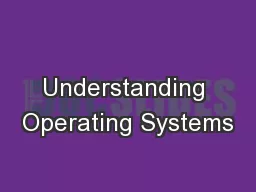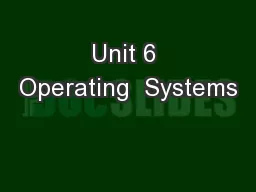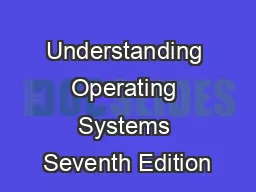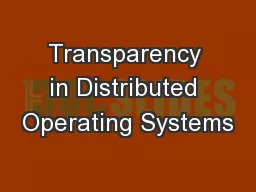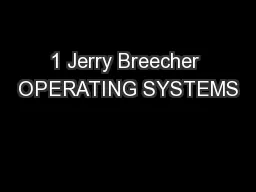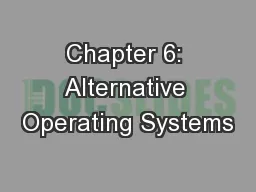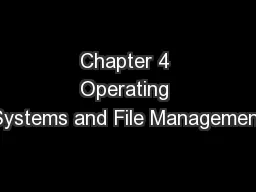PPT-Section 3.1: Operating Systems Concepts
Author : cheryl-pisano | Published Date : 2018-11-04
1 A Computer Model An operating system has to deal with the fact that a computer is made up of a CPU random access memory RAM inputoutput IO devices and longterm
Presentation Embed Code
Download Presentation
Download Presentation The PPT/PDF document "Section 3.1: Operating Systems Concepts" is the property of its rightful owner. Permission is granted to download and print the materials on this website for personal, non-commercial use only, and to display it on your personal computer provided you do not modify the materials and that you retain all copyright notices contained in the materials. By downloading content from our website, you accept the terms of this agreement.
Section 3.1: Operating Systems Concepts: Transcript
Download Rules Of Document
"Section 3.1: Operating Systems Concepts"The content belongs to its owner. You may download and print it for personal use, without modification, and keep all copyright notices. By downloading, you agree to these terms.
Related Documents

